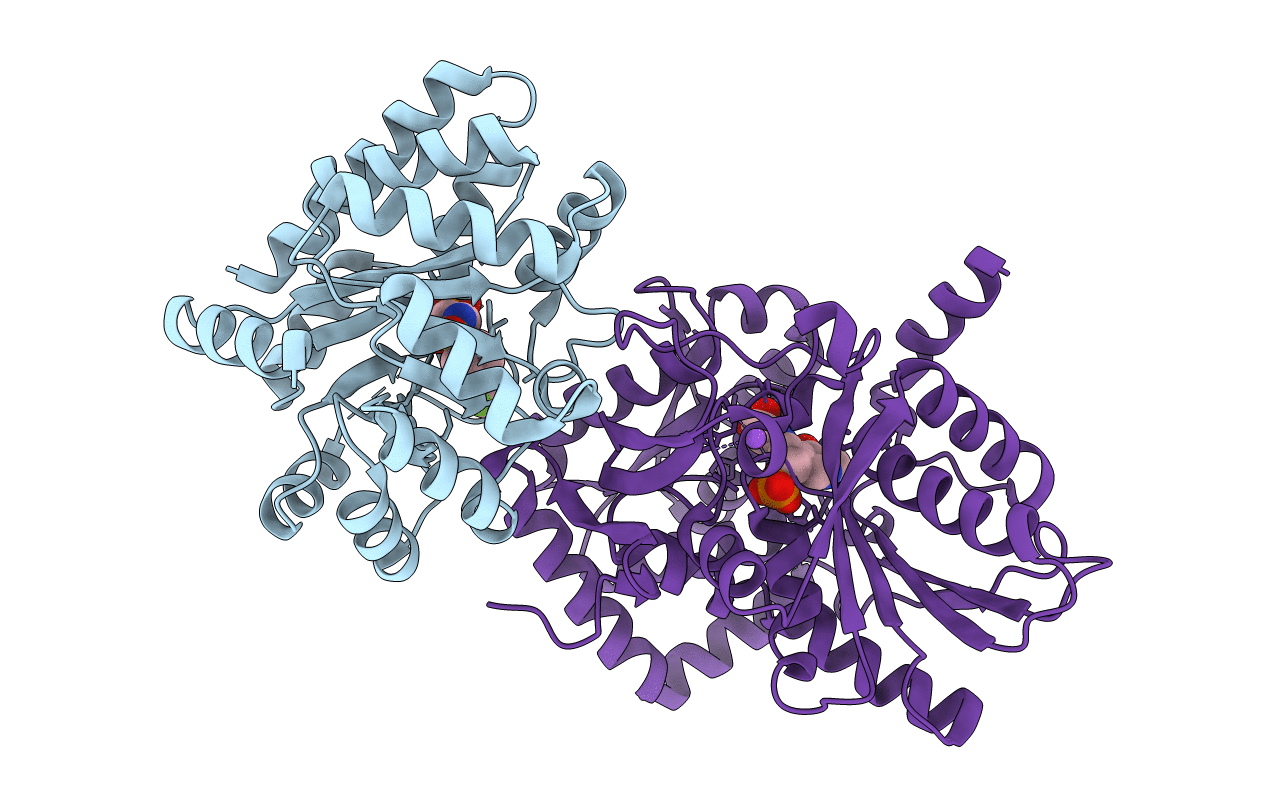Abstact
In the tryptophan synthase bienzyme complex, indole produced by substrate cleavage at the alpha-site is channeled to the beta-site via a 25 A long tunnel. Within the beta-site, indole and l-Ser react with pyridoxal 5'-phosphate in a two-stage reaction to give l-Trp. In stage I, l-Ser forms an external aldimine, E(Aex1), which converts to the alpha-aminoacrylate aldimine, E(A-A). Formation of E(A-A) at the beta-site activates the alpha-site >30-fold. In stage II, indole reacts with E(A-A) to give l-Trp. The binding of alpha-site ligands (ASLs) exerts strong allosteric effects on the reaction of substrates at the beta-site: the distribution of intermediates formed in stage I is shifted in favor of E(A-A), and the binding of ASLs triggers a conformational change in the beta-site to a state with an increased affinity for l-Ser. Here, we compare the behavior of new ASLs as allosteric effectors of stage I with the behavior of the natural product, d-glyceraldehyde 3-phosphate. Rapid kinetics and kinetic isotope effects show these ASLs bind with affinities ranging from micro- to millimolar, and the rate-determining step for conversion of E(Aex1) to E(A-A) is increased by 8-10-fold. To derive a structure-based mechanism for stage I, X-ray structures of both the E(Aex1) and E(A-A) states complexed with the different ASLs were determined and compared with structures of the ASL complexes with the internal aldimine [Ngo, H., Harris, R., Kimmich, N., Casino, P., Niks, D., Blumenstein, L., Barends, T. R., Kulik, V., Weyand, M., Schlichting, I., and Dunn, M. F. (2007) Biochemistry 46, 7713-7727].



